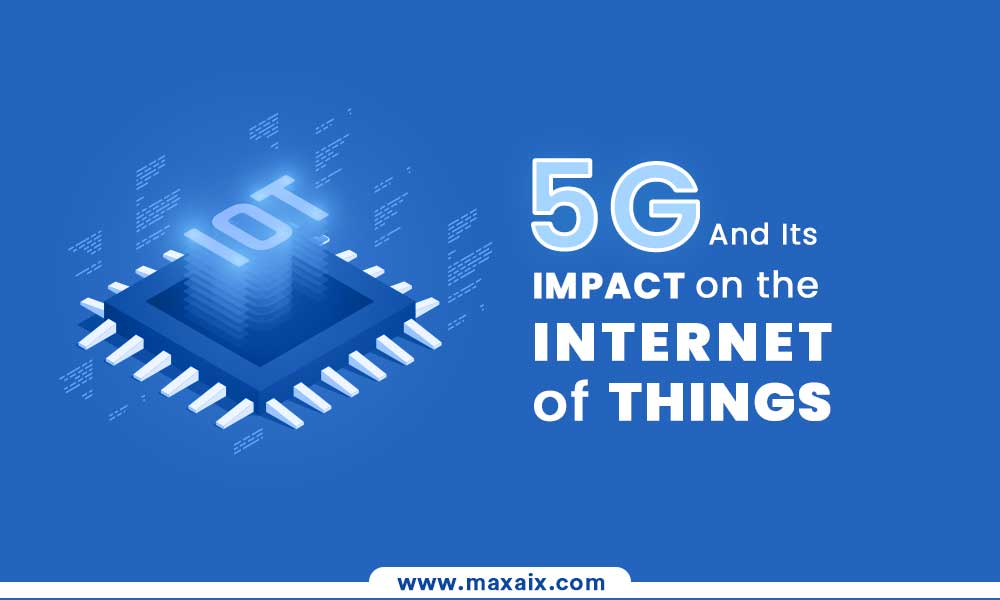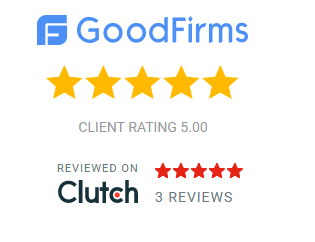10 – 5G and IoT: Emerging Technologies With Endless Use Cases

Introduction of the Topic: “5G and IoT: Emerging Technologies with Endless Use Cases”
The convergence of 5G and IoT technologies is reshaping the digital landscape, introducing a myriad of innovative use cases that transcend traditional boundaries. This article explores the diverse applications and advantages of 5G and IoT, shedding light on their transformative impact on various industries.
Advantages of 5G and IoT Technology
5G and IoT technologies offer a host of advantages, revolutionizing connectivity and data exchange.
- High Speeds: 5G enables ultra-fast data transfer rates, reducing latency and enhancing real-time communication.
- Massive Connectivity: IoT devices benefit from 5G’s ability to connect a vast number of devices simultaneously, fostering a more interconnected world.
- Low Latency: Reduced latency in 5G networks enhances the responsiveness of IoT applications, which is critical for time-sensitive tasks.
- Improved Efficiency: IoT devices leveraging 5G can transmit and receive data more efficiently, optimizing resource usage.
- Enhanced Reliability: The reliability of 5G networks ensures consistent connectivity, which is crucial for mission-critical applications.
- Increased Capacity: 5G networks accommodate a higher density of connected devices, supporting the exponential growth of IoT.
- Energy Efficiency: Both 5G and IoT technologies strive for energy efficiency, contributing to sustainable and eco-friendly solutions.
- Innovation Catalyst: The combination of 5G and IoT fuels innovation, enabling the development of novel applications and business models.
How the Growth of 5G and IoT Use Cases Is Changing the World of Tech
The proliferation of 5G and IoT use cases is fundamentally altering the technological landscape.
- Ubiquitous Connectivity: 5G and IoT are fostering ubiquitous connectivity, linking devices, sensors, and systems seamlessly.
- Industry Transformation: Various industries, including healthcare, manufacturing, and transportation, are undergoing transformative changes through the adoption of 5G and IoT.
- Smart Cities: The integration of 5G and IoT in urban infrastructure is giving rise to smart cities, optimizing resource management, and improving the quality of life for residents.
- Edge Computing: 5G enables edge computing, allowing processing closer to the data source, reducing latency, and enhancing efficiency.
- Data-driven Insights: The synergy of 5G and IoT provides a wealth of data, empowering businesses with actionable insights for informed decision-making.
- Economic Impact: The combined impact of 5G and IoT is contributing to economic growth, job creation, and the development of new markets.
- Global Connectivity: 5G and IoT facilitate global connectivity, breaking down geographical barriers and fostering collaboration on a global scale.
- Technological Convergence: The convergence of these technologies is blurring the lines between the physical and digital realms, enabling more immersive and interconnected experiences.
- Enhanced User Experiences: Users benefit from faster, more reliable, and context-aware services, enhancing their overall digital experiences.
10: 5G and IoT: Emerging Technologies with Endless Use Cases
a. Smart Cities: Enhancing Urban Living
Overview: The integration of 5G and IoT technologies transforms cities into intelligent ecosystems.
Use Cases:
Smart infrastructure monitoring
Traffic management and optimization
Waste management with smart bins
Energy-efficient street lighting
Popularity: Gaining traction globally, especially in the US, Canada, and the UK, for its potential to enhance urban living.
b. Healthcare IoT: Revolutionizing Patient Care
Overview: IoT applications in healthcare leverage 5G for real-time monitoring and diagnostics.
Use Cases:
Remote patient monitoring
Smart medical devices
Asset tracking in hospitals
Predictive maintenance of medical equipment
Popularity: Widely adopted in the US, Canada, and the UK for its potential to improve patient outcomes and streamline healthcare processes.
c. Industrial IoT (IIoT): Transforming Manufacturing
Overview: 5G and IoT revolutionize manufacturing processes through connectivity and data exchange.
Use Cases:
Predictive maintenance of machinery
Real-time quality control
Supply chain optimization
Automated inventory management
Popularity: Embraced globally, particularly in manufacturing hubs, for its role in increasing efficiency and reducing operational costs.
d. Autonomous Vehicles: Shaping the Future of Transportation
Overview: 5G connectivity enhances the capabilities of autonomous vehicles, ensuring real-time communication and decision-making.
Use Cases:
Connected vehicle fleets
Traffic management systems
Enhanced navigation and safety features Remote vehicle diagnostics
Popularity: Gaining momentum in the US, Canada, and the UK for its potential to revolutionize transportation.
e. Agriculture IoT: Precision Farming
Overview: IoT applications in agriculture leverage 5G for precision farming and resource optimization.
Use Cases:
Soil monitoring and analysis
Automated irrigation systems
Livestock tracking and health monitoring
Drone-assisted crop monitoring
Popularity: Increasingly adopted globally for its potential to increase agricultural productivity and sustainability.
f. Smart Homes: Creating Connected Living Spaces
Overview: The integration of 5G and IoT technologies transforms cities into intelligent ecosystems.
Use Cases:
Smart thermostats and climate control
Homesecurity systems
Connected appliances
Energy-efficient lighting and automation
Popularity: Gaining traction globally, especially in the US, Canada, and the UK, for its potential to enhance urban living.
g. Retail IoT: Revolutionizing the Shopping Experience
Overview: IoT applications in retail leverage 5G for enhanced customer experiences and operational efficiency.
Use Cases:
Smart shelves and inventory tracking
Personalized shopping experiences
Contactless payments and checkouts
Supply chain visibility
Popularity: Transforming retail landscapes globally, with the US, Canada, and the UK at the forefront of adoption.
h. Environmental Monitoring: Preserving the Planet
Overview: 5G and IoT contribute to environmental conservation through real-time monitoring and data-driven insights.
Use Cases:
Air and water quality monitoring
Wildlife tracking and conservation
Forest fire detection and prevention
Climate change research
Popularity: Gaining attention worldwide for its role in addressing environmental challenges and promoting sustainability.
i. Augmented Reality (AR) and Virtual Reality (VR): Immersive Experiences
Overview: 5G enhances AR and VR experiences, providing high-speed connectivity for immersive content.
Use Cases:
AR-assisted maintenance and training
VR-based simulations for education
Virtual tours and experiences
Enhanced gaming and entertainment
Popularity: Growing in popularity globally, with the US, Canada, and the UK at the forefront of AR and VR adoption.
j. Public Safety and Emergency Services: Ensuring Swift Responses
Overview: 5G and IoT technologies enhance public safety through improved communication and data exchange.
Use Cases:
Emergency response coordination
Video surveillance and analytics
Wearable devices for first responders
Disaster management and early warning systems
Popularity: Crucial in ensuring public safety globally, with widespread adoption in developed countries.
How Maxaix Development Brings More Productivity to the 5G and IoT Tech?
Maxaix development enhances 5G and IoT applications with increased productivity.
- Efficient Data Processing: Maxaix optimizes data processing, ensuring faster and more efficient utilization of information.
- Predictive Analytics: Maxaix employs predictive analytics, offering insights into potential issues and enabling proactive measures.
- Scalability: Maxaix ensures scalability, allowing applications to seamlessly adapt to growing data and user demands.
- Security Measures: Maxaix integrates robust security measures, safeguarding data and ensuring the privacy of users.
- Customization: Maxaix allows for customized solutions, tailoring 5G and IoT applications to specific business needs.
Why is each case popular in the United States, Canada, and the United Kingdom?
- Smart Cities: Addressing urbanization challenges and enhancing the quality of life
- Healthcare IoT: Improving patient care and optimizing healthcare processes
- Industrial IoT (IIoT): Enhancing manufacturing efficiency and reducing operational costs
- Autonomous Vehicles: Shaping the future of transportation and increasing road safety
- Agriculture IoT: Increasing agricultural productivity and sustainability
- Smart Homes: Creating modern, efficient, and secure living spaces
- Retail IoT: Transforming the retail landscape for enhanced customer experiences
- Environmental Monitoring: Addressing environmental challenges and promoting sustainability
- AR and VR: Providing immersive experiences in education, gaming, and entertainment
- Public Safety and Emergency Services: Ensuring swift and coordinated responses for public safety
5 Reasons: Why Do People Like and Use This Tech?
Enhanced Connectivity: 5G and IoT offer seamless and reliable connectivity, enhancing communication.
Improved Efficiency: The technologies optimize processes, leading to increased efficiency.
Innovative Experiences: AR, VR, and other applications provide innovative and immersive experiences.
Data-driven Insights: Users appreciate the wealth of data-driven insights for informed decision-making.
Sustainability: Environmental monitoring and IoT applications contribute to sustainable practices.
How Much Does It Cost to Develop a 5G and IoT App?
The cost of developing 5G and IoT applications varies based on factors such as:
- Features and Complexity: The complexity of the application and the features required influence development costs.
- Platform: Developing for iOS, Android, or both impacts costs.
- Integration of 5G: The level of integration with 5G networks affects development expenses.
- Security Measures: Implementing robust security measures may contribute to development costs.
- Location of Development: Costs may vary based on the region or country of the development team.
Generally a MVP of IOT application ranges from $15,000 to $25,000. Please freel free to contact us for more details
Frequently Asked Questions
Q1: How does 5G benefit IoT applications?
5G enhances IoT applications by providing high-speed, low-latency connectivity, enabling real-time communication and data exchange.
Q2: What industries benefit the most from the convergence of 5G and IoT?
Industries such as healthcare, manufacturing, transportation, and smart cities benefit significantly from the combined impact of 5G and IoT.
Q3: Are there privacy concerns with 5G and IoT applications?
Privacy concerns exist, but robust security measures, such as encryption and secure authentication, are implemented to address them.
Q4: Can 5G and IoT applications be customized for specific business needs?
Yes, the flexibility of these technologies allows for customized solutions tailored to the specific needs of businesses.
Q5: How do AR and VR benefit from 5G connectivity?
5G enhances AR and VR experiences by providing high-speed connectivity, reducing latency, and enabling more immersive content.
Q6: Can 5G and IoT applications contribute to environmental sustainability?
Yes, environmental monitoring and IoT applications contribute to sustainability by providing real-time data for informed environmental management.
Q7: Are there government regulations governing the development of 5G and IoT applications?
Yes, there are regulations in place to ensure the responsible development and deployment of 5G and IoT technologies.
Q8: How can 5G and IoT applications improve public safety and emergency response?
These technologies enhance public safety through improved communication, video surveillance, and coordinated emergency response measures.
Q9: Can 5G and IoT applications operate in remote or rural areas?
While challenges exist, efforts are being made to extend 5G and IoT coverage to remote and rural areas, addressing connectivity gaps.


